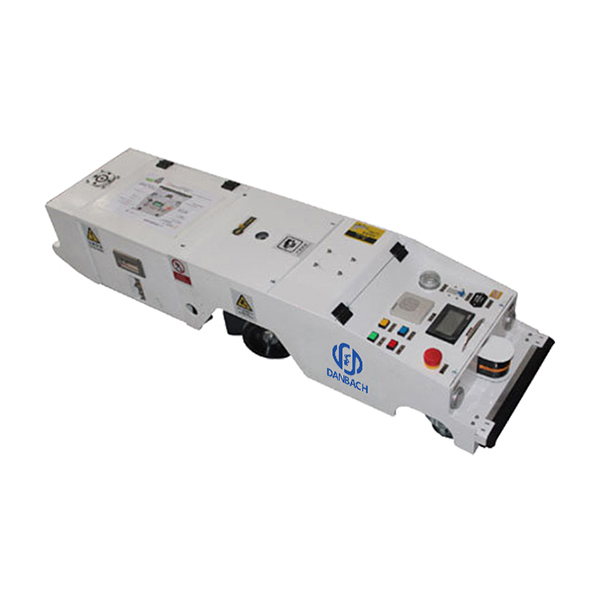In the process of automatic handling, the AGV car receives instructions from the main control computer of the base through the communication system and reports its own status. The main control computer sends tasks to the AGV and collects the information sent back by the AGV to monitor the working condition of the AGV. Through the on-board computer, the following monitoring can be completed: manual control, safety device start, battery status, steering limit, brake release, walking light, drive and steering motor control, charging contactor, etc.
The onboard computer equipped with AGV is generally realized by PLC controller or single chip microcomputer in hardware. It is the direct control center of AGV robot driving and operation. Its main functions are: receiving the command and task from the main control computer, reporting AGV car's own status to the main control computer, such as AGV position, running speed, direction, fault status, etc; According to the accepted task and operation route, it will automatically run to the destination loading and unloading station. In this process, it will automatically complete the selection of operation route, operation speed, automatic unloading of goods, avoidance of trolley in operation direction, safety alarm, etc.

In the process of automatic handling, the AGV car receives instructions from the main control computer of the base through the communication system and reports its own status. The main control computer sends tasks to the AGV and collects the information sent back by the AGV to monitor the working condition of the AGV. Through the on-board computer, the following monitoring can be completed: manual control, safety device start, battery status, steering limit, brake release, walking light, drive and steering motor control, charging contactor, etc.
1.Continuous: AGV is allowed to use radio frequency method at any time and at any position relative to the ground controller, or use wires embedded in the guidance path for inductive communication, such as radio, infrared laser communication method. At present, infrared laser online real-time two-way data communication can reach a distance of 120 meters. If the laser power is insufficient, it can relay every 15-20 meters.
2. Decentralized: provides communication between a specific AGV and a ground controller at a predetermined location, such as an AGV robot docking station. This kind of communication is generally realized by inductive or optical methods. The disadvantage of distributed communication is that AGV can't get in touch with ground control station when it breaks down between two communication points. At present, most AGVs adopt distributed communication mode, which is mainly due to the low price and few failures between two communication points.
 中文
中文 English
English
